“Ammonia Acetate” has been added to your cart. View cart

Cooling Mint Floral fragrance
$17,000.00 Original price was: $17,000.00.$15,500.00Current price is: $15,500.00.

Dextrose monohydrate 500gms
$2,300.00 Original price was: $2,300.00.$2,200.00Current price is: $2,200.00.
Sodium acetate anhydrous 99% 500gms
$2,500.00 Original price was: $2,500.00.$2,300.00Current price is: $2,300.00.
Whatsapp Order
Sodium acetate, with the chemical formula CH3COONaCH3COONa, is a versatile compound commonly used in laboratories for various applications.
SKU:
ACS73742CHEM0
Category: Analytical Reagents
Description
uses of Sodium acetate
- Buffer Solutions:
- pH Stabilization: Sodium acetate is a key component in buffer solutions, especially acetate buffers, which are used to maintain a stable pH in biochemical and chemical experiments. These buffers are particularly effective in the pH range of 3.6 to 5.6.
- Applications: Commonly used in enzyme reactions, cell culture media, and other biological assays requiring a specific pH environment.
- Precipitation of Nucleic Acids:
- DNA/RNA Isolation: Sodium acetate is used in the precipitation of DNA and RNA from aqueous solutions. By adding sodium acetate and alcohol (ethanol or isopropanol), nucleic acids can be precipitated and separated from the solution, facilitating their purification and concentration.
- Procedure: After adding sodium acetate and alcohol to the nucleic acid solution, the mixture is often cooled, centrifuged, and the precipitated nucleic acids are collected.
- Chemical Synthesis:
- Source of Acetate Ions: Sodium acetate provides acetate ions for various organic synthesis reactions.
- Applications: Used in the synthesis of esters, acetylation reactions, and as a catalyst in certain organic transformations.
- Heat Packs:
- Exothermic Crystallization: Sodium acetate is used in reusable heat packs. A supersaturated solution of sodium acetate releases heat upon crystallization, which can be triggered by flexing a metal disc within the pack.
- Mechanism: The solution remains liquid until the disc is clicked, initiating crystallization and an exothermic reaction that releases heat.
- pH Adjustment:
- Solution Preparation: Sodium acetate is used to adjust the pH of various solutions in chemical and biological protocols.
- Control: It is often added to acidic or basic solutions to achieve a desired pH level.
- Electrophoresis:
- Buffer Preparation: In electrophoresis, sodium acetate can be used to prepare running buffers, particularly for RNA electrophoresis.
- Function: Helps maintain the ionic strength and pH of the buffer system during the separation process.
- Titration:
- Analytical Reagent: Sodium acetate is employed as a reagent in titration methods, such as complexometric titrations involving EDTA.
- Role: Acts as a buffering agent to maintain a stable pH during the titration process.
- Food Preservation (Industrial Use):
- Preservative: Although not strictly a laboratory use, sodium acetate is also used as a preservative in the food industry to inhibit microbial growth and as a flavoring agent (E262).
- Applications: Helps in extending the shelf life of various food products.
Reviews (1)
1 review for Sodium acetate anhydrous 99% 500gms
Add a review Cancel reply
Related products
Agar Agar Powder
Agar agar powder refers to the dehydrated and powdered form of agar agar, a natural gelling agent derived from seaweed. It is made by drying and grinding the agar agar gel, resulting in a fine powder with excellent gelling properties. Agar agar powder is commonly used in cooking, baking, and food preparation as a vegetarian and vegan substitute for gelatin. It is prized for its ability to create firm and stable gels at relatively low concentrations and temperatures. Agar agar powder is versatile and can be used in a variety of recipes, including desserts, confectioneries, jams, jellies, and savory dishes.
Aluminum Ammonium Sulphate
Aluminum ammonium sulfate, also known as ammonium alum or just alum, is a chemical compound with the formula (NH4)Al(SO4)2·12H2O. It's a white crystalline solid commonly used in water purification, leather tanning, and as a mordant in dyeing textiles.
In water purification, alum acts as a coagulant to remove impurities by causing suspended particles to clump together, making it easier for filtration to remove them. In leather tanning, it helps to stabilize the leather by tightening the collagen fibers. And in dyeing textiles, alum helps the dye adhere to the fabric.
However, it's important to note that excessive exposure to aluminum compounds like alum can be harmful, so it's typically used with caution and proper safety measures.
Aluminum Carbonate 250g
Aluminum carbonate is a chemical compound with the formula Al2(CO3)3. It is a white, crystalline solid that is insoluble in water. Aluminum carbonate is not commonly encountered in pure form due to its high instability, especially in the presence of water and carbon dioxide. Instead, it tends to decompose into aluminum hydroxide and carbon dioxide when exposed to moisture or acidic conditions.
Aluminum Nitrate 500gm
Aluminum nitrate is a chemical compound with the formula Al(NO3)3. It's a salt composed of aluminum and nitrate ions. It's commonly encountered as a hydrate with varying numbers of water molecules associated with each aluminum nitrate formula unit. It's soluble in water and is often used in various industrial processes, including as a mordant in dyeing fabrics and in the production of aluminum oxide. Additionally, it's used in some chemical reactions and as a component in some types of rocket propellants.
Aluminum Potassium Sulphate 500gm
Aluminum Potassium Sulphate, commonly known as potassium alum or potash alum, is a chemical compound with the formula KAl(SO₄)₂·12H₂O. It is a type of alum, a double sulfate salt, and is typically found in its dodecahydrate form. Here are some key points about this compound:
Physical Properties:
- Appearance: Colorless, transparent crystals or white powder.
- Solubility: Soluble in water but insoluble in alcohol.
- Melting Point: Decomposes at high temperatures before melting.
Chemical Properties:
- Molecular Formula: KAl(SO₄)₂·12H₂O
- Molecular Weight: 474.39 g/mol (for the dodecahydrate form)
- Acidity: It is slightly acidic in aqueous solution.
Ammonia Solution 2.5litres
An ammonia solution is a solution of ammonia (NH3) gas dissolved in water. It is a clear, colorless liquid with a pungent odor and a basic pH. The concentration of ammonia in the solution can vary, and is typically expressed in terms of percent by weight or by volume.
Ammonia solutions are commonly used in a variety of applications, including cleaning agents, fertilizers, and as a precursor to other chemicals. They are also used in industrial processes such as refrigeration, gas purification, and water treatment. Ammonia solutions can be dangerous if not handled properly, as they are highly corrosive and can release toxic fumes if mixed with certain chemicals
Ammonium Chloride 500gm
Ammonium chloride is an inorganic compound with the chemical formula NH4Cl. It is a white crystalline salt that is highly soluble in water and has a salty taste. Ammonium chloride is often used in various industrial and laboratory applications, including as a flux in soldering, as a nitrogen source in fertilizers, and as a component in dry cell batteries. It can also be used in medicine as an expectorant to help thin and loosen mucus in the respiratory system



 LABORATORY EQUIPMENT & APPARATUS
LABORATORY EQUIPMENT & APPARATUS
 Fertilizers
Fertilizers Plant Growth Regulators
Plant Growth Regulators Soil Conditioners
Soil Conditioners Animal Feed Additives
Animal Feed Additives Biostimulants
Biostimulants Dough Conditioners
Dough Conditioners Flour Treatments
Flour Treatments Fat Replacers
Fat Replacers Preservatives (baking)
Preservatives (baking)
 Surfactants (cleaning)
Surfactants (cleaning) Builders
Builders Bleaching Agents
Bleaching Agents Enzymes
Enzymes Solvents (cleaning)
Solvents (cleaning) Fragrances
Fragrances




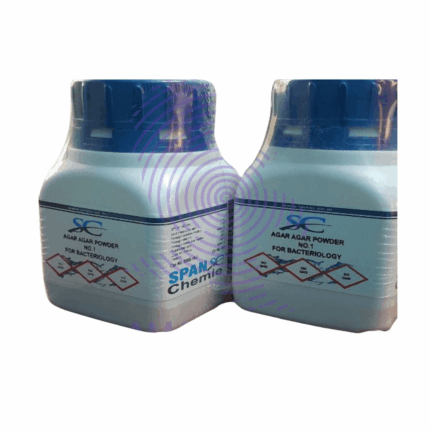

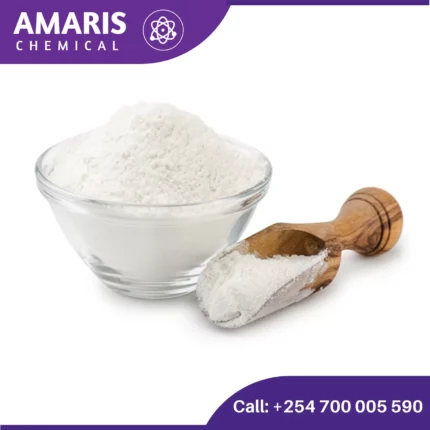
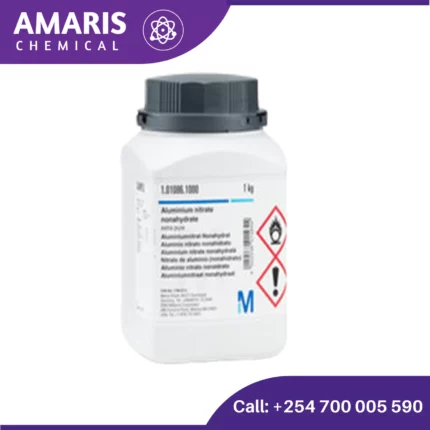

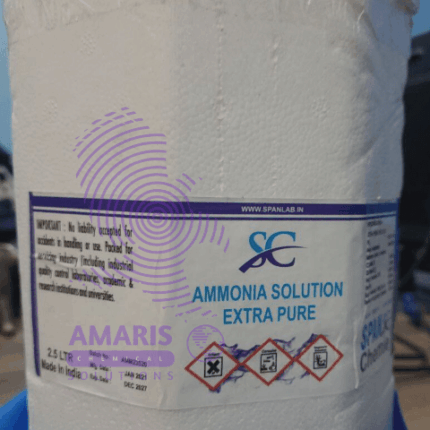


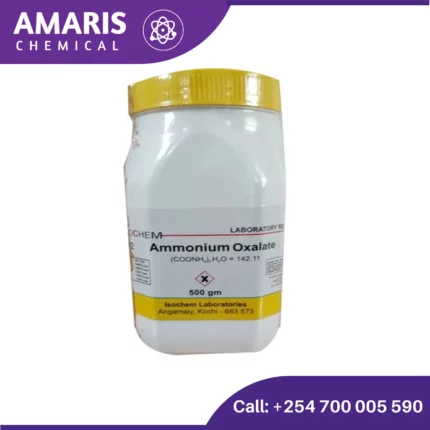













Nandwa –
Its highly soluble in water